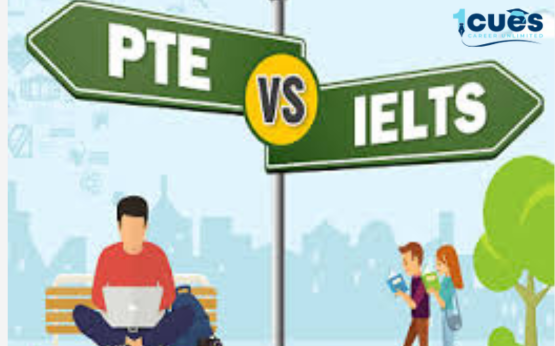- 22 May, 2024
- 345
- 0
When it comes to proving your English proficiency for study, work, or migration purposes, two of the most popular tests are the Pearson Test of English (PTE) and the International English Language Testing System (IELTS). Both exams assess the same fundamental skills—listening, reading, writing, and speaking—but they do so in different ways. Choosing the right test can significantly impact your experience and performance. Here’s a comprehensive comparison to help you decide which test suits your needs best.
Understanding PTE and IELTS
PTE (Pearson Test of English):
Format: Completely computer-based.
Duration: Approximately 3 hours.
Sections: Listening, Reading, Writing, and Speaking.
Scoring: Automated scoring system, with scores ranging from 10 to 90.
Results: Typically available within 2 to 5 days.
IELTS (International English Language Testing System):
Format: Available in two versions: IELTS Academic and IELTS General Training. It can be taken on paper or computer.
Duration: 2 hours and 45 minutes.
Sections: Listening, Reading, Writing, and Speaking.
Scoring: A combination of human and automated scoring, with scores ranging from 0 to 9.
Results: Paper-based results in 13 days; computer-based results in 3-5 days.
Key Differences
1. Test Format:
PTE: Entirely computer-based, including the speaking section, which involves recording responses via a microphone. This can be less intimidating for those who are anxious about face-to-face interactions.
IELTS: The speaking section is conducted face-to-face with an examiner. This format can be beneficial for those who perform better in personal interactions and can use body language to aid communication.
2. Scoring:
PTE: Automated scoring ensures objective results, minimizing human bias. This can be advantageous if you are looking for a consistent and fair assessment.
IELTS: Includes human evaluators, especially in the speaking and writing sections. This can sometimes allow for more nuanced scoring, where human intuition and understanding play a role.
3. Availability and Acceptance:
PTE: Increasingly accepted by educational institutions, especially in Australia and New Zealand. It is also gaining acceptance for visa applications.
IELTS: Widely recognized and accepted by over 10,000 institutions in more than 140 countries, including the UK, USA, Canada, and Australia.
Pros and Cons
PTE:
Pros:
Quick results.
Uniform scoring due to automated evaluation.
Flexible test dates.
Cons:
Limited acceptance in some regions compared to IELTS.
Entirely computer-based, which might be challenging for those uncomfortable with technology.
IELTS:
Pros:
Widely accepted and recognized.
Choice between paper-based and computer-based tests.
Face-to-face speaking test, which some may find more engaging.
Cons:
Longer wait time for paper-based results.
Potential for human bias in scoring.
Suitability Based on Personal Factors
Comfort with Technology:
Choose PTE if you are comfortable with computer-based tests and prefer automated scoring.
Choose IELTS if you prefer or perform better in traditional, paper-based settings or enjoy direct human interaction.
Test Preparation:
PTE may require familiarization with computer-based testing interfaces and practicing timed responses.
IELTS preparation might involve practicing handwriting for the paper-based test and improving face-to-face communication skills.
Test Anxiety:
If you experience test anxiety during face-to-face interactions, PTE’s computerized format might be less stressful.
If you feel more comfortable expressing yourself in person, IELTS could be a better fit.
Finding the Right Coaching
Regardless of which test you choose, proper preparation is key to success. One excellent resource for finding quality coaching is 1Cues, a perfect marketplace where you can explore multiple coaching options for both PTE and IELTS exams. Whether you need personalized tutoring, intensive workshops, or practice materials, 1Cues offers a variety of coaching services tailored to your specific needs. Leveraging the right coaching can enhance your test readiness, boost your confidence, and ultimately improve your scores.
Conclusion
Choosing between PTE and IELTS depends on your personal preferences, strengths, and the specific requirements of the institutions or immigration authorities you are applying to. Both tests are robust measures of English proficiency and offer unique advantages. Consider factors like test format, scoring systems, result timelines, and acceptance rates to make an informed decision that aligns with your goals and comfort levels. And remember, resources like 1Cues can provide the support and guidance you need to excel in your chosen test.
Tags #career counselling services, #study Abroad, #PTE, #IELTS


